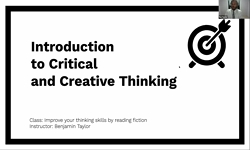The purpose of this study is to understand a concept and function of feedback more broadly and to analyze types of feedback reflecting specificity of the Korean language lesson. The study conducted content analysis on classroom discourse in Korean lan...
http://chineseinput.net/에서 pinyin(병음)방식으로 중국어를 변환할 수 있습니다.
변환된 중국어를 복사하여 사용하시면 됩니다.
- 中文 을 입력하시려면 zhongwen을 입력하시고 space를누르시면됩니다.
- 北京 을 입력하시려면 beijing을 입력하시고 space를 누르시면 됩니다.

국어 수업에서 나타나는 교사의 피드백 발화 유형 분석 = Analysis of Teachers` Feedback Utterance Types in Korean Language Class
한글로보기https://www.riss.kr/link?id=A103540136
- 저자
- 발행기관
- 학술지명
- 권호사항
-
발행연도
2017
-
작성언어
-
-
주제어
피드백 유형 ; 국어 수업 ; 의미 협상 ; 의사소통 ; 사고력 ; Feedback Type ; Korean Language Class ; Meaning Negotiation ; Communication ; Thinking Ability
-
KDC
700
-
등재정보
KCI등재
-
자료형태
학술저널
- 발행기관 URL
-
수록면
97-133(37쪽)
-
KCI 피인용횟수
5
- DOI식별코드
- 제공처
-
0
상세조회 -
0
다운로드
부가정보
다국어 초록 (Multilingual Abstract)
The purpose of this study is to understand a concept and function of feedback more broadly and to analyze types of feedback reflecting specificity of the Korean language lesson. The study conducted content analysis on classroom discourse in Korean language classes and categorized teachers` feedback utterance types, and analyzed the characteristics. Feedback in Korean language classes was categorized into `to understand intent`, `to help solve problems`, `to expand and improve communication and thinking ability`, and `to evaluate and reinforce`. Each subtype is then classified into 16 categories according to a context and core function of individual feedback utterances. Feedback is not just about assessing learner performance. Feedback is to encourage lively interaction between teachers and learners so that learners can actively involve in learning. Feedback also helps learners solve a problem by themselves and construct meaning. Especially, in the Korean language class, feedback should provide opportunities to activate communication through meaning negotiation and improve communication and thinking ability.
참고문헌 (Reference)
1 이경화, "초등학교 국어수업에서의 교사 시작 대화연속체 분석" 한국초등교과교육학회 25 : 59-75, 2016
2 권순희, "초등학교 국어과 수업에 나타난 교사의 질문, 피드백 양상과 개선 방안" 한국어교육학회 (118) : 65-100, 2005
3 이정우, "초등학교 국어과 수업 대화의 교사시작 대화이동 연구" 국어교과교육학회 8 : 161-188, 2004
4 박영예, "초등영어 교사의 피드백의 유형과 특징 분석" 현대영어교육학회 16 (16): 153-173, 2015
5 임태민, "초등수학 수업에서의 피드백 유형 및 학생의 반응" 초등교육연구원 20 (20): 37-54, 2009
6 김승현, "초등 예비 교사의 피드백 발화에 대한 분석적 고찰" 한국화법학회 (25) : 41-73, 2014
7 하빛나, "좋은 국어과 수업 담화 분석-고등학교 국어과 수업 담화의 양상과 이에 대한 교사·학습자 인식을 중심으로" 고려대학교 한국어문교육연구소 16 : 217-251, 2014
8 윤관기, "음악과 교과교육학 과목에서 교수피드백에 대한 초등예비교사들의 인식 및 만족도 조사" 한국음악교육학회 43 (43): 139-163, 2014
9 박윤희, "수업 상황 요인에 따른 국어교사의 피드백 화법 양상 연구" 이화여자대학교 교육대학원 2011
10 주상대, "상호작용적 수업을 위한 교사의 화법 전략 연구 : 국어과 수업대화를 중심으로" 신라대학교 교육과학연구소 9 : 353-374, 2004
1 이경화, "초등학교 국어수업에서의 교사 시작 대화연속체 분석" 한국초등교과교육학회 25 : 59-75, 2016
2 권순희, "초등학교 국어과 수업에 나타난 교사의 질문, 피드백 양상과 개선 방안" 한국어교육학회 (118) : 65-100, 2005
3 이정우, "초등학교 국어과 수업 대화의 교사시작 대화이동 연구" 국어교과교육학회 8 : 161-188, 2004
4 박영예, "초등영어 교사의 피드백의 유형과 특징 분석" 현대영어교육학회 16 (16): 153-173, 2015
5 임태민, "초등수학 수업에서의 피드백 유형 및 학생의 반응" 초등교육연구원 20 (20): 37-54, 2009
6 김승현, "초등 예비 교사의 피드백 발화에 대한 분석적 고찰" 한국화법학회 (25) : 41-73, 2014
7 하빛나, "좋은 국어과 수업 담화 분석-고등학교 국어과 수업 담화의 양상과 이에 대한 교사·학습자 인식을 중심으로" 고려대학교 한국어문교육연구소 16 : 217-251, 2014
8 윤관기, "음악과 교과교육학 과목에서 교수피드백에 대한 초등예비교사들의 인식 및 만족도 조사" 한국음악교육학회 43 (43): 139-163, 2014
9 박윤희, "수업 상황 요인에 따른 국어교사의 피드백 화법 양상 연구" 이화여자대학교 교육대학원 2011
10 주상대, "상호작용적 수업을 위한 교사의 화법 전략 연구 : 국어과 수업대화를 중심으로" 신라대학교 교육과학연구소 9 : 353-374, 2004
11 이수진, "비계 설정으로서의 쓰기 교수 대화 연구" 청람어문교육학회 (30) : 91-123, 2004
12 김영대, "배움의 공동체 수업에서 나타나는 교사의 피드백 발화 유형 분석" 교육연구원 33 (33): 75-94, 2017
13 류지영, "미술교육에서 초등 예비교사의 피드백 발화 연구" 한국초등미술교육학회 42 (42): 103-128, 2015
14 김재봉, "말하기·듣기 수업에 나타난 대화연속체의 양상과 그 교육적 활용 방안 -‘질문-대답-평가’로 이뤄진 대화연속체를 중심으로" 한국초등국어교육학회 (29) : 5-44, 2005
15 박태호, "김교사의 읽기 교수화법 분석 연구- 수업대화 구조를 중심으로 -" 한국교육과정평가원 6 (6): 75-98, 2003
16 김형진, "국어과 읽기 평가에서의 피드백 제시 전략 모형 개발" 한국독서학회 (11) : 113-140, 2004
17 이현진, "국어과 수업 대화 분석을 통한 교수 화법 양상 연구" 국어교과교육학회 8 : 189-229, 2004
18 박재현, "국어 교수 화법의 유형적 특성에 관한 분석적 고찰 - 국어교사의 평가/피드백 발화를 중심으로" 한국국어교육학회 (86) : 125-156, 2010
19 신동로, "교사의 교정적 피드백이 자기 효능감 향상과 학업성취에 미치는 영향" 한국교육과정학회 19 (19): 319-342, 2001
20 이창덕, "교사 질문발화와 학생 반응에 대한 교사 피드백 발화 연구" 국어교과교육학회 15 : 177-216, 2008
21 Nassaji, H., "What’s the use of ‘triadic dialogue?’: An investigation of teacher-student interaction" 21 : 376-406, 2000
22 Smith, P. L., "Toward a taxonomy of feedback : Content and scheduling" 1988
23 Canale, M., "Theoretical bases of communicative approaches to second language teaching and testing" 1 : 1-47, 1980
24 Cole, P. G., "Teaching Principles and Practice" Prentice Hall 1987
25 Wells, G., "Reevaluating the IRF sequence: A proposal for the articulation of theories of activity and discourse for the analysis of teaching and learning in the classroom" 5 (5): 1-37, 1993
26 Corden, R., "Literacy and Learning through Talk: Strategies for the Primary Classroom" Open University Press 2000
27 Schimmel, B. J., "Instructional Designs for Microcomputer Courseware" LEA Publishers 183-195, 1988
28 Heritage, M., "Formative assessment: What do teachers need to know and do?" 89 (89): 140-145, 2007
29 Cazden, C. B., "Classroom Discourse: The language of teaching and learning" Heinemann Educational Books 2001
30 Mehan, H., ""What time is it, Denise?" : Asking known information questions in classroom discourse" 18 : 285-294, 1979
동일학술지(권/호) 다른 논문
-
- 국어교육학회
- 박재현 ( Park Jaehyun )
- 2017
- KCI등재
-
토론 참여 방식과 활동 인식이 글쓰기에 미치는 영향―대학생 참여자를 중심으로
- 국어교육학회
- 김혜연 ( Kim Hyeyoun )
- 2017
- KCI등재
-
토픽 모델링에 따른 고등학생 논설문의 응결성과 응집성의 상관분석
- 국어교육학회
- 이슬기 ( Lee Seulki )
- 2017
- KCI등재
-
국어과 `수업코칭` 대화분석―수업 후 수업나눔 단계를 중심으로
- 국어교육학회
- 진용성 ( Jin Yongseong )
- 2017
- KCI등재
분석정보
인용정보 인용지수 설명보기
학술지 이력
| 연월일 | 이력구분 | 이력상세 | 등재구분 |
|---|---|---|---|
| 2026 | 평가예정 | 재인증평가 신청대상 (재인증) | |
| 2020-01-01 | 평가 | 등재학술지 유지 (재인증) |  |
| 2017-01-01 | 평가 | 등재학술지 유지 (계속평가) |  |
| 2013-01-01 | 평가 | 등재학술지 유지 (등재유지) |  |
| 2010-01-01 | 평가 | 등재학술지 유지 (등재유지) |  |
| 2008-01-01 | 평가 | 등재학술지 유지 (등재유지) |  |
| 2005-01-01 | 평가 | 등재학술지 선정 (등재후보2차) |  |
| 2004-01-01 | 평가 | 등재후보 1차 PASS (등재후보1차) |  |
| 2003-07-01 | 평가 | 등재후보학술지 선정 (신규평가) |  |
학술지 인용정보
| 기준연도 | WOS-KCI 통합IF(2년) | KCIF(2년) | KCIF(3년) |
|---|---|---|---|
| 2016 | 1 | 1 | 1.18 |
| KCIF(4년) | KCIF(5년) | 중심성지수(3년) | 즉시성지수 |
| 1.22 | 1.22 | 1.606 | 0.47 |




 KCI
KCI KISS
KISS






